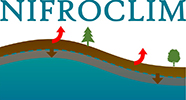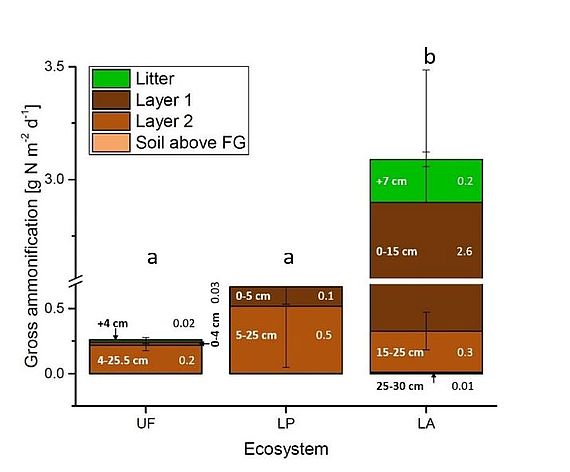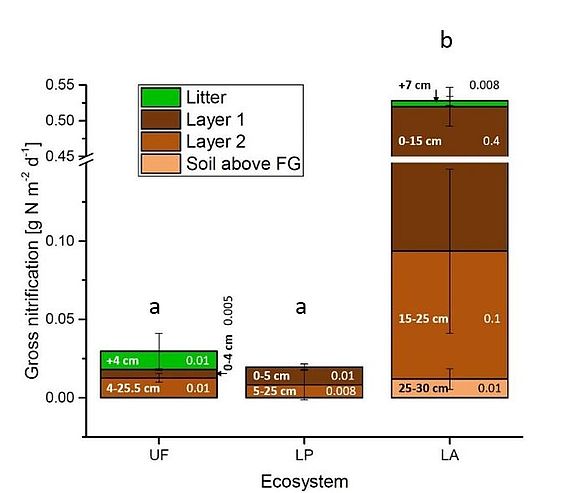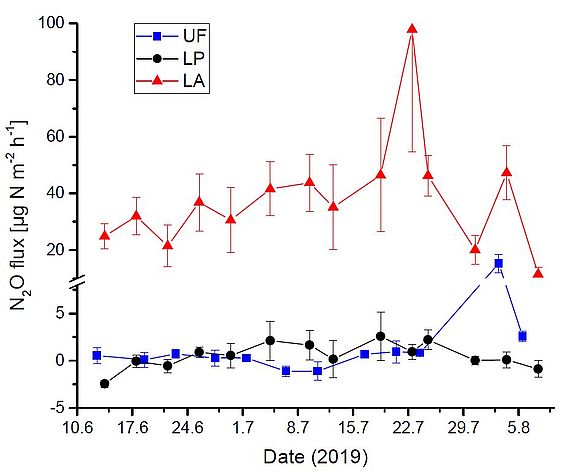Surprisingly, gross ammonification rates in the three tested permafrost-affected soils (Ramm et al. 2022, SBB 172) of upland forest (UF), lowland peatland (LP) and lowland alder forest (LA) were comparable to non-permafrost systems (Fig. 1). This means that generally nitrogen (N) cycling was not confined to organic N, which is in line with our recent meta-analysis (Ramm et al. 2022, ERL 17).
But while nitrification in UF and LP was low, leading to only low N2O emissions, N limitation was released in LA where alders fix atmosperic N2 via biological N fixation by Frankia bacteria (Fig. 2). Consequently, the alder forest showed huge N2O emissions (Fig. 3).
Thus, the studied alder forest turned out to have a strongly accelerated N cycle compared to the lowland peatland in close vicinity. As N losses and N climate feedbacks are to be expected, alder forests that are currently spreading in the circumpolar permafrost region are an important future study object.



